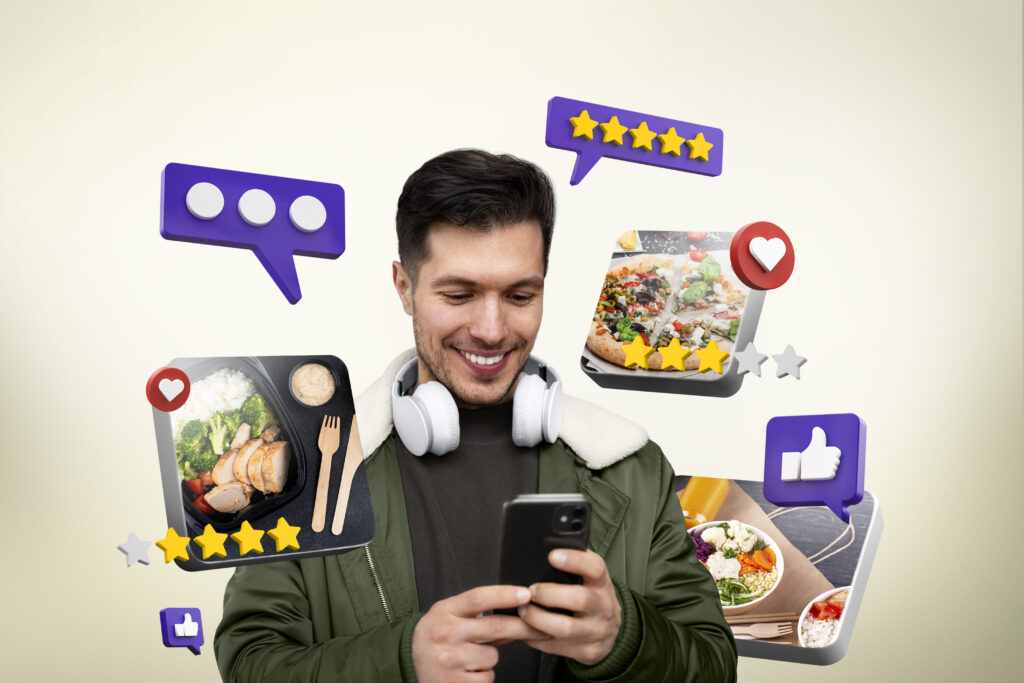
Maximizing subscriber lifetime value (LTV) in a Quick commerce and E-commerce delivery app is essential for sustained growth and profitability. The longer a subscriber remains active and engaged, the more revenue you can generate from them over time. In today’s competitive landscape, focusing on LTV not only boosts revenue but also reduces customer acquisition costs over the long term, as retaining existing users is far more cost-effective than attracting new ones. Here’s a comprehensive guide on how to maximize subscriber LTV for your delivery app.
1. Onboarding and First Impressions
The first interaction a customer has with your app sets the tone for their entire experience. A seamless onboarding process reduces friction and increases the likelihood that they’ll make a purchase. Some strategies include:Simplified sign-up process: Allow sign-ups with minimal information. Use social media or Google accounts for quick access.
Personalized onboarding: Use data to customize the experience, such as suggesting products based on location or browsing history.
Interactive tutorials: Show customers how to navigate your app and highlight key features like order tracking, subscriptions, and quick reorder options.
First-time incentives: Provide discounts or free trials to encourage users to complete their first order quickly.
2. Offer Subscription Models
Subscription models are a powerful way to increase LTV as they offer recurring revenue and foster customer loyalty. In a delivery app, subscription models can be implemented in various ways:Free delivery subscription: Many users may be discouraged by delivery fees. Offering free delivery through a subscription (e.g., Amazon Prime or Instacart) adds value and keeps customers coming back.
Exclusive product access: For subscribers, offer early or exclusive access to new products, bundles, or limited-time promotions.
Discounted pricing: Offer subscribers discounted rates on their orders or recurring discounts on specific product categories (e.g., groceries or household essentials).
Loyalty and reward programs: Create a points-based reward system where customers accumulate points with each purchase, redeemable for future discounts or freebies.
3. Personalization and Predictive Recommendations
Today’s consumers expect a personalized shopping experience. Use data analytics and machine learning to enhance personalization efforts:
Personalized product recommendations: Leverage AI to recommend products based on previous purchases, search behavior, and demographic data. Personalized experiences make customers feel understood and increase the likelihood of repeat purchases.
Predictive ordering: For regular orders like groceries, you can predict when a customer will need to reorder and send timely reminders or even auto-fill their cart for them.
Behavior-based notifications: Send push notifications that cater to a subscriber’s preferences—whether it’s a product they’re interested in, a price drop, or a reminder of expiring points from the loyalty program.
4. Enhance User Experience (UX)
The overall usability of your app can make or break the customer experience. To enhance LTV, focus on creating an intuitive and frictionless UX:
Seamless navigation: Ensure that users can easily search, browse, and filter products, and quickly add them to their cart.
One-click reordering: Especially for quick commerce, speed is everything. Allow customers to reorder their favorite products with a single click.
Instant delivery updates: Provide real-time updates on the status of deliveries through notifications, so customers are always informed.
Optimized payment options: Offer multiple payment methods, including digital wallets, buy-now-pay-later, and even cryptocurrency, making checkout fast and convenient.
5. Efficient Delivery and Fulfillment
In the quick commerce and e-commerce space, fast and accurate delivery is a major driver of customer satisfaction. Focusing on the last mile can drastically improve LTV:
Faster delivery times: Use geo-location technology and efficient routing to minimize delivery times.
Flexible delivery options: Allow users to choose same-day, next-day, or scheduled delivery slots.
Accurate ETAs: Transparency on estimated delivery times builds trust. If delays occur, keep customers informed and offer compensation if necessary.
Subscription for faster delivery: Similar to Amazon Prime’s two-day delivery, offer subscribers guaranteed faster delivery times.
Order accuracy: Ensure orders are packed correctly every time. Mistakes can be costly and drive customers away, so invest in a solid order management system that minimizes errors.
6. Customer Support and Engagement
Customer support is critical in retaining customers and maximizing LTV. Make sure you have a robust support system in place:
24/7 support: Offer multiple channels for customer support (chatbots, email, phone) and ensure timely responses.
Proactive support: Reach out to customers who have experienced issues (e.g., delayed or incorrect orders) before they reach out to you.
Feedback loops: Regularly solicit feedback through surveys or post-delivery emails to identify areas for improvement.
Community building: Build a community around your brand, where customers feel a sense of belonging. This can be achieved through exclusive content, customer events, or social media engagement.
7. Retention Campaigns and Re-engagement
Keeping your subscribers engaged is vital for maintaining LTV. Here are some ways to ensure they keep coming back:
Win-back campaigns: For customers who haven’t made a purchase in a while, offer targeted discounts or incentives to lure them back.
Gamification: Implement gamified elements such as streaks, challenges, or daily login rewards to keep users engaged and incentivized to use the app regularly.
Seasonal campaigns: Capitalize on holidays, seasons, or events to create timely promotions that make customers feel they’re getting something special.
Push notifications and email marketing: Regularly communicate with users through personalized notifications and emails about new products, exclusive deals, or helpful reminders (e.g., a product they’ve been viewing is now on sale).
8. Focus on High-Value Customers
Not all customers are created equal. By identifying and focusing on high-value subscribers, you can maximize LTV more efficiently:
Segmentation: Use data to segment your users based on frequency of orders, average order value, or engagement levels, and tailor marketing campaigns accordingly.
VIP Programs: Offer high-spending customers VIP treatment, including exclusive deals, premium support, and early access to new features.
Customer analytics: Regularly analyze customer data to identify patterns that indicate high-LTV behavior, and use those insights to fine-tune your acquisition and retention strategies.
9. Innovate and Scale with Technology
As the market for delivery apps evolves, staying ahead of the curve with innovative technology will keep your customers engaged:
AI-powered chatbots: Deploy AI-powered support bots that provide instant assistance to users 24/7, handling common issues like tracking orders or processing returns.
Voice ordering: Implement voice-ordering capabilities for hands-free shopping, catering to users looking for ultra-convenient solutions.
Sustainability initiatives: Many modern consumers value eco-friendly brands. Offer green delivery options, reduce packaging waste, or offset carbon emissions, and promote these initiatives within the app.
10. Data-Driven Optimization
Regularly track key metrics to measure success and adapt your strategies accordingly. Metrics to monitor include:
Churn rate: The percentage of customers who cancel or stop using your service. Regularly analyze this to understand where you’re losing customers and implement retention strategies.
Customer lifetime value: Keep track of LTV and identify the factors that drive it, whether it’s higher average order value, increased order frequency, or longer customer retention.
Customer acquisition cost (CAC): To maximize profitability, compare your LTV with CAC to ensure you’re spending efficiently on marketing.
Engagement metrics: Monitor user engagement (time spent on app, interactions per session) to gauge the effectiveness of your personalization efforts.
Conclusion
Maximizing subscriber lifetime value in quick commerce and e-commerce delivery apps requires a multi-faceted approach that combines seamless user experiences, personalized offerings, efficient operations, and continuous innovation. By focusing on retention through subscription models, tailored experiences, and efficient delivery services, you’ll not only increase the value each customer brings but also foster loyalty and long-term growth for your business.
Looking to learn more Let’s Chat
